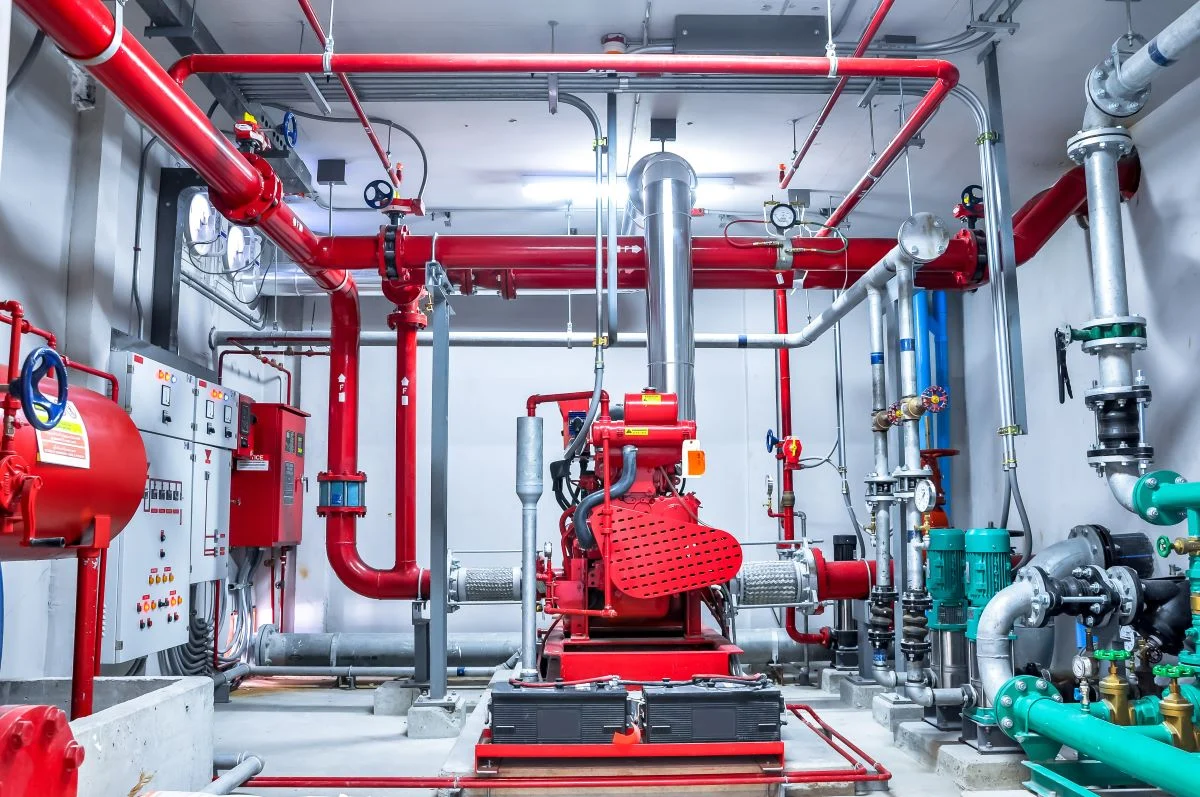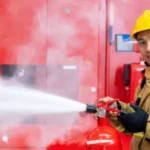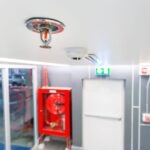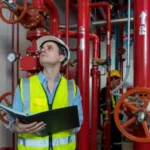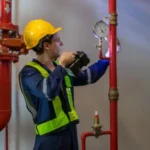Fire protection solutions differ based on the type of commercial building. Regardless of whether your facility is a warehouse, office, manufacturing space, or even a retail space, each facility has inherent challenges and risks. Also, each facility has different regulatory requirements and operational complexities. Thus, some flexibility of design is not only important, but it is essential for effective and compliant fire protection.
This article will delve into the importance of flexibility in fire protection systems. Also, we will find out how these flexible designs will meet the evolving needs of commercial buildings. In addition to this, we will also discuss how a local leader like Guardian Fire Protection, based in Southern California, delivers specialized solutions for businesses seeking true peace of mind.
How Do Fire Protection Needs Differ Across Commercial Sectors?
Varying Building Types and Risks
All commercial properties have a unique fire profile:
- Warehouses and Distribution Centers
Must provide fire protection for high-piled storage and a combination of fast and slow-burning commodities.
- Manufacturing Plants
The manufacturing plants deal with highly combustible liquids, use a unique set of machines and equipment, and perform hazardous operations. All these together pose a severe fire risk.
- Offices, Retail Stores, and Institutions
Typically prioritize life-safety because of the high occupancy and diverse floor plans.
- Data Centers and High-Tech Operations
Require highly sensitive detection and waterless suppression for critical equipment.
- Food Service and Cold Storage
Contain combustibles in a cold or wet environment, and require a unique fire protection system.
These different industries highlight the need for flexible fire protection systems that account for space, use, and vulnerability.
Why Is Flexible System Design Important for Diverse Commercial Fire Protection Needs?
- Variability Across Industries
Commercial buildings vary widely in Southern California; each one has different environments and fire protection issues. For example, warehouses may include the complexities of high-piled storage with ever-evolving inventory and racking systems. Manufacturing buildings may be at risk of hazards due to flammable materials and specialized processes.
Whereas office buildings or retail spaces need to prioritize occupant safety while accommodating frequently changing floor layouts. The additional concerns arise around protecting temperature-sensitive, perishable products or valuable electronic equipment. This variation demands fire protection solutions that are adaptable.
- Challenges of a One-Size-Fits-All Approach
Using a rigid, standardized fire protection method for every type of building is usually ineffective. Standardized systems can either be overbuilt and waste resources or underbuilt and leave areas unprotected. This is where customization of the fire protection system becomes important for safety and success.
Why Flexibility Makes the Difference
- Customized Solutions for Real-World Conditions
Flexible system design allows the fire protection professional to look deeply into actual risk, occupancy, and use of a facility. Rather than installing the same system in every building, the experts can specify the type of detector and type of suppression, the placement of detectors and equipment, and the coverage areas, based on the unique hazards present in each facility. A customized fire protection system will ensure high safety by using adequate resources.
- Adaptability to Change and Growth
Buildings change! Companies reconfigure office spaces, warehouses rearrange racking, and production lines shift or expand. Flexible designs make it easier to adapt to change, with fewer modifications. This greater flexibility saves time, reduces downtime, and makes it easier and less costly to keep protection updated with actual operations.
What Are The Key Benefits of Flexible Fire Protection Systems
1. Enhanced Safety and Code Compliance
- Eliminating Blind Spots
Customized design helps to receive adequate detection and suppression for all kinds of buildings, including those that have unique architecture and features. The proper coverage reduces the risk of huge fire hazards.
- Meeting Evolving Regulations
Fire codes, compliance specifications, and other regulations can change regularly. Flexible systems offer the potential to adapt or reconfigure to stay compliant with industry changes. And, these changes can happen without investing too much. Also, it reduces the risk of penalties.
2. Cost Efficiency and Streamlined Maintenance
- Preventing Over-Design
Flexible designs use only those components that are necessary to provide effective protection without overspending on unwanted equipment. Also, it reduces long-term maintenance costs due to over-equipping.
- Easier Upgrades and Expansions
When a facility does need an upgrade or expansion, flexible and modular systems may readily adapt themselves to modifications. Ultimately, this will reduce the impact on the operation of the facility and keep future project costs lower.
3. Special Solutions for Challenging Environments
- Warehousing and High-Piled Storage
Flexible fire suppression in a warehouse may also include adjustable rack sprinklers, dry pipe systems for sensitive goods, and scalable layouts that ease the process of securing a high piled storage permit in California as storage needs expand.
- Food Processing and Cold Storage
In the food industry, facilities may also require flexible, modular, moisture-resistant system concepts to protect food products held at very low or very high temperatures without the risk of freezing in cold rooms.
How Guardian South Fire Protection Leads With Flexible Solutions
Guardian South Fire Protection, based in Southern California, has developed a reputation for providing dynamic commercial fire system designs to various industries. It all begins with a comprehensive risk and site assessment with an understanding of California fire codes and local standard(s), which are always changing. With extensive experience in warehousing, food service, manufacturing, and retail, Guardian South Fire Protection works with clients to develop tailored solutions.
This can be developing 3D CAD models when working with complex material-handling environments, installing dry or in-rack sprinkler systems to protect water-sensitive inventory, or redesigning the existing building, in terms of codes, and storing more inventory.
Conclusion
The shifting global landscape of commercial fire protection requires a flexible system design, one that would address the challenges of the environment we are living in today. Whether fire protection is needed in large warehouses, complex manufacturing facilities, high-rise office buildings, or in small businesses, it is this flexibility that will allow you to:
- Protection is always appropriate and code-compliant
- Costs are managed so that there is maximum protection without over- or under-protection
- Systems will change as your business changes, and with minimal impact to your operations.
With the help of professionals from trusted specialists like Guardian South Fire Protection in Southern California, you can achieve a flexible approach to fire protection design based on decades of local expertise and commitment to your safety and operational continuity. Investment in flexible systems design is always the safest and most certain investment any business can make in its future success and safety.
Frequently Asked Questions (FAQs)
1. Why can’t all commercial buildings use the same fire protection system?
Because every commercial facility, whether it’s a warehouse, office, data center, or manufacturing plant—faces different fire hazards, regulations, and operational challenges. A one-size-fits-all system often leads to either overprotection (wasting resources) or underprotection (creating safety risks). Flexible fire protection designs ensure that each building receives the exact level of coverage and compliance it needs.
2. How does a flexible fire protection system save money in the long run?
Flexible systems are designed to fit the actual needs of a facility, preventing unnecessary spending on equipment or coverage. They also allow for easier upgrades and modifications, reducing costly renovations when the building layout or operations change. Maintenance becomes simpler and more efficient when the system is not overbuilt or mismatched to the environment.
3. Are flexible systems compliant with local fire codes and regulations?
Yes, in fact, flexible systems are better equipped to stay compliant with evolving fire codes. In regions like Southern California, where regulations change frequently, flexible designs can be adapted or expanded without major system overhauls—ensuring continuous compliance and avoiding penalties or shutdowns.
4. What industries benefit most from a flexible fire protection approach?
Industries with dynamic environments such as warehousing, manufacturing, data centers, food service, and retail benefit the most. These sectors often deal with changes in storage, layout, or equipment. Flexible systems accommodate these shifts easily, providing uninterrupted safety without extensive redesigns or downtime.

